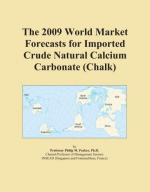|
This section contains 577 words (approx. 2 pages at 300 words per page) |

|
Calcium carbonate (CaCO3) is one of the most common compounds on Earth, making up about 7% of Earth's crust. It occurs in a wide variety of mineral forms, including limestone, marble, travertine, and chalk. Calcium carbonate also occurs combined with magnesium as the mineral dolomite, CaMg(CO 3) 2. Stalactites and stalagmites in caves are made of calcium carbonate. A variety of animal products are also made primarily of calcium carbonate, notably coral, sea shells, egg shells, and pearls.
Calcium carbonate has two major crystalline forms—two different geometric arrangements of the calcium ions and carbonate ions that make up the compound. These two forms are called aragonite and calcite. All calcium carbonate minerals are conglomerations of various-sized crystals of these two forms, packed together in different ways and containing various impurities. The large, transparent crystals known as Iceland spar, however, are pure calcite.
In its pure form...
|
This section contains 577 words (approx. 2 pages at 300 words per page) |

|


